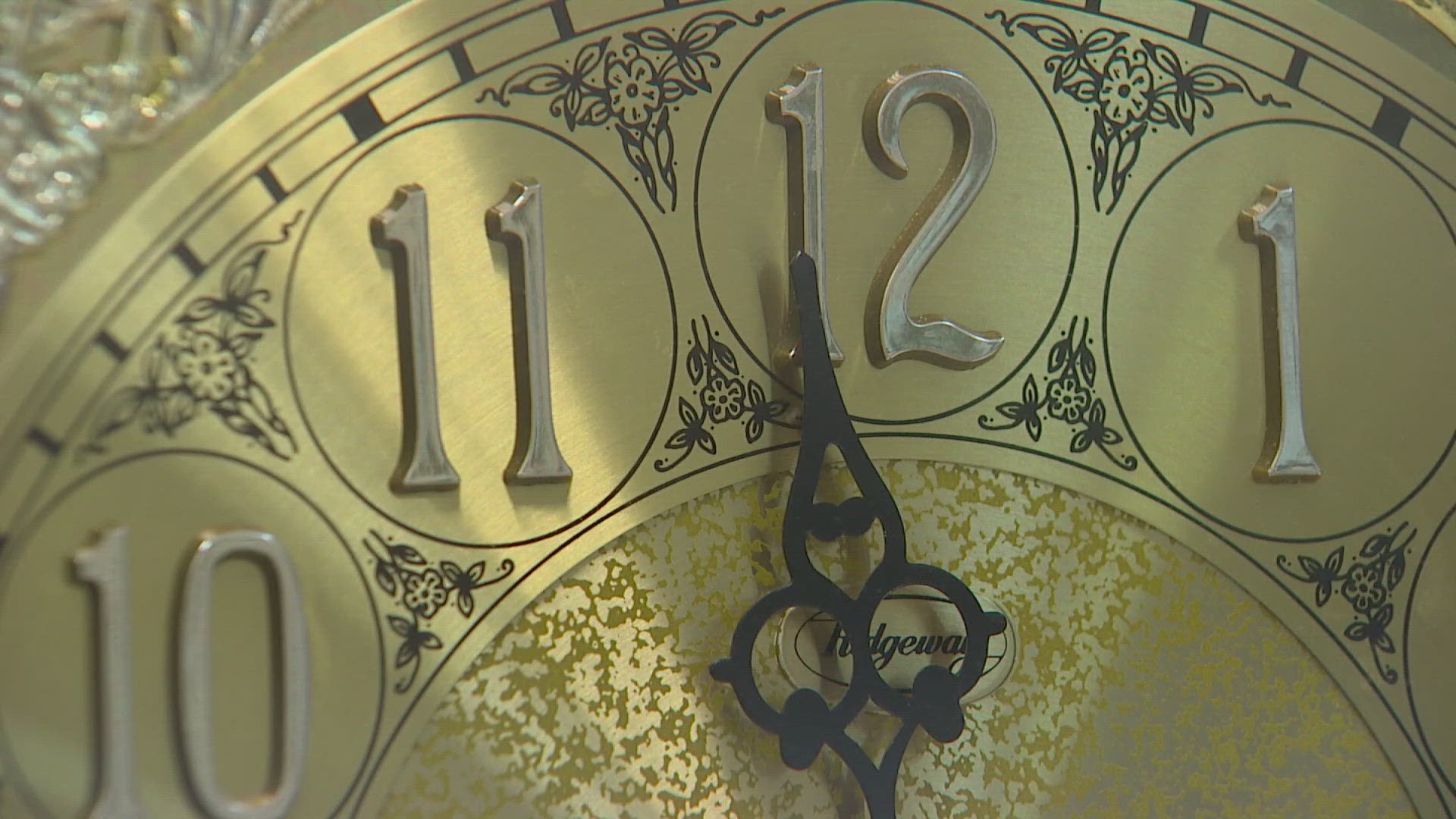OLYMPIA, Wash. — In 2019, Washington state legislators nearly unanimously voted to eliminate daylight saving time, but the move needed congressional approval.
The state’s still waiting for Congress to act as most of the nation prepares to turn their clocks back an hour on Nov. 5. Clocks will "fall back" one hour at 2 a.m. on Nov. 5, granting most people an extra hour of sleep.
With the change comes earlier sunrises and nightfall well before 7 p.m. It won't be until March that we fiddle with our clocks to "spring ahead" once again.
The U.S. Senate unanimously passed the “Sunshine Protection Act” in March of 2022, but the House has not taken up the issue.
Washington state Representative Marcus Riccelli sponsored the state’s version.
"I will tell you it was the number one thing that my colleagues and I got emailed about during that session when we passed the bill," said Riccelli.
He said he does not know why Congress has not passed a bill that has bipartisan support.
"I think the public is hungry for even what could seem to be an easy win for Congress to show that it can work. That it's not a broken clock,” said Riccelli.
Watch: UW professor explains why daylight saving time has negative effects on health
Why was daylight saving time created?
The practice has been implemented in some form since World War I when Germany originally introduced it to conserve power and energy by extending daylight hours.
The Standard Time Act in 1918 was the first introduction of daylight saving time to American clocks. The temporary measure, which once held the nickname "war time," lasted from spring to fall and was intended to cut energy costs during World War I. The act is also responsible for the five time zones still in place today.
The Department of Transportation was created and given regulatory power over time zones and daylight saving time in 1966. In order to correct confusing and alternating time zones, the Uniform Time Act of 1966 sought a nationwide standard for daylight saving time from the last Sunday in April to the last Sunday in October.
Few changes have happened since then. Most recently, daylight saving time was extended by a few weeks in 2005 when former President George Bush changed the law. It is now observed from the second Sunday in March until the first Sunday in November.
Despite the national observance, Arizona and Hawaii don't observe daylight saving time. Under federal law, states are allowed to opt out of daylight saving time and remain on standard time, but are not allowed to remain on daylight time.
The U.S. has previously implemented daylight saving time year-round twice, once in World War II for fuel conservation and once in 1974 as "trial run" during an energy crisis.
While there is some belief that daylight saving time reduces electricity consumption, traffic and crime, two studies, one performed in 1975 and one in 2005, when DST was extended, revealed that much of the changes in energy consumption, traffic and crime were "statistically insignificant." The 2005 study found that each day of extended daylight saving time lowered total national electricity consumption by 0.5%.

